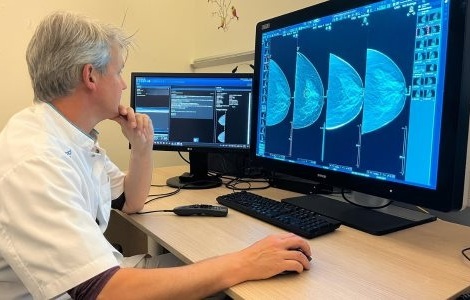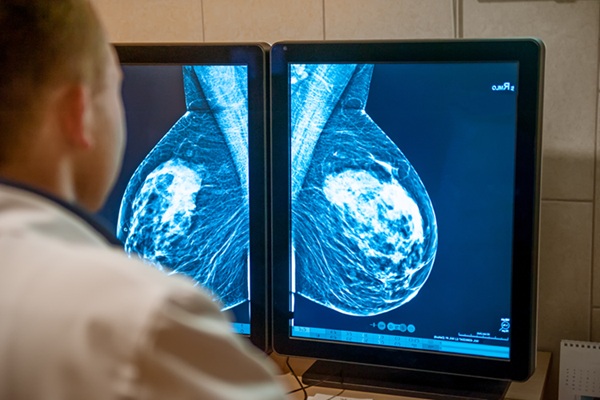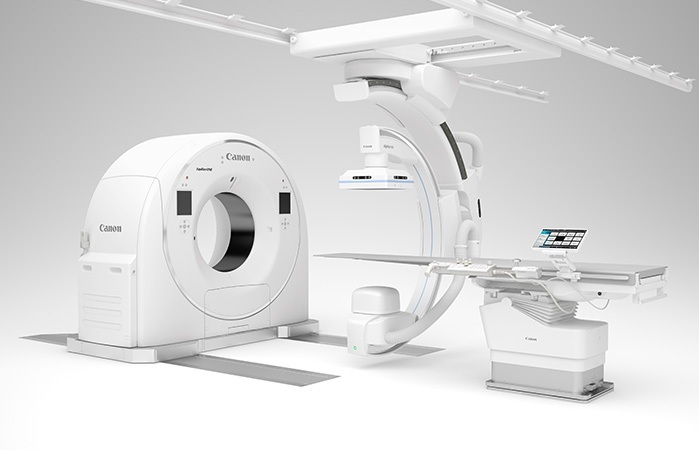Real-Time Ultrasound AI Guides Nerve Block Procedures 
|
By MedImaging International staff writers Posted on 29 Apr 2021 |
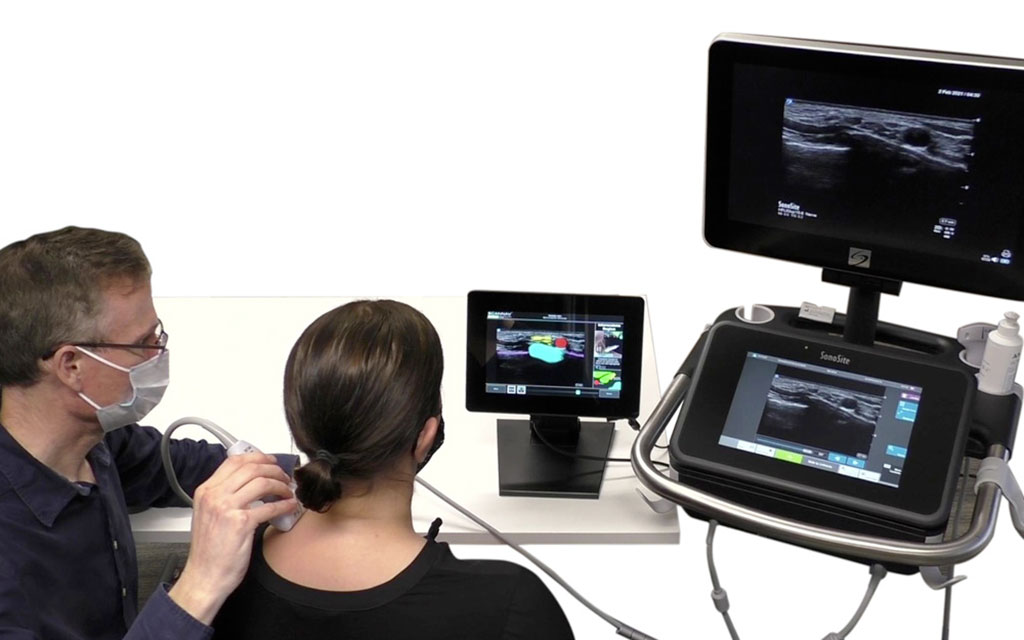
Image: The ScanNav Anatomy PNB (center) (Photo courtesy of Intelligent Ultrasound Group)
A meld of ultrasound specific artificial intelligence (AI) and simulation software provides clinicians with continuous feedback during a peripheral nerve block (PNB).
The Intelligent Ultrasound Group (Cardiff, United Kingdom) ScanNav Anatomy: PNB software is designed to assist healthcare professionals who perform ultrasound-guided procedures on a less frequent basis in carrying out nine common peripheral nerve blocks, automatically identifying and highlighting nerves, arteries, and other anatomical structures crucial for PNB. Procedures supported include interscalene, superior trunk, supraclavicular, axillary, erector spinae plane, rectus sheath, suprainguinal fascia iliaca, adductor canal/sub-sartorial femoral triangle, and popliteal PNB.
In addition, users can use the system's integrated three dimensional (3D) animations to refamiliarize themselves with blocks they carry out less frequently. The platform can also serve as a training simulator using a classroom-based version of the software, the ScanNav AnatomyGuide PNB Trainer. ScanNav PNB will be sold as a standalone product that sits on tabletop or mounts onto a portable cart that can be plugged into existing anesthesiology ultrasound machine with a HDMI or DVI second monitor port. The system can be cleaned with medical grade disinfectants, and the touchscreen can be operated while wearing gloves.
“Building on the success of ScanNav Assist, our first obstetric AI, ScanNav Anatomy PNB will launch into the anesthesiology ultrasound market and continues the Group’s expansion into AI-based real-time clinical ultrasound image analysis,” said Stuart Gall, CEO of Intelligent Ultrasound Group. “We are particularly pleased that many of the independent clinicians who used ScanNav PNB during product testing think that it would benefit them in their everyday clinical practice.”
The PNB procedure involves injection of a local anesthetic close to a nerve or peripheral nerve bundle in order to inhibit the excitatory transmembrane action potential that transmits the nociceptive stimulus towards the central nervous system (CNS), modulating pain perception. Selection of the local anesthetic (such as lidocaine or bupivacaine) depends on the type of block, the physical condition of the patient, and pharmacological characteristics. PNBs have been in use since the 1880's, when a cocaine injection was first used to produce sensory block to the ulnar, musculocutaneous, supratrocheal, and infraorbital regions.
Related Links:
Intelligent Ultrasound Group
The Intelligent Ultrasound Group (Cardiff, United Kingdom) ScanNav Anatomy: PNB software is designed to assist healthcare professionals who perform ultrasound-guided procedures on a less frequent basis in carrying out nine common peripheral nerve blocks, automatically identifying and highlighting nerves, arteries, and other anatomical structures crucial for PNB. Procedures supported include interscalene, superior trunk, supraclavicular, axillary, erector spinae plane, rectus sheath, suprainguinal fascia iliaca, adductor canal/sub-sartorial femoral triangle, and popliteal PNB.
In addition, users can use the system's integrated three dimensional (3D) animations to refamiliarize themselves with blocks they carry out less frequently. The platform can also serve as a training simulator using a classroom-based version of the software, the ScanNav AnatomyGuide PNB Trainer. ScanNav PNB will be sold as a standalone product that sits on tabletop or mounts onto a portable cart that can be plugged into existing anesthesiology ultrasound machine with a HDMI or DVI second monitor port. The system can be cleaned with medical grade disinfectants, and the touchscreen can be operated while wearing gloves.
“Building on the success of ScanNav Assist, our first obstetric AI, ScanNav Anatomy PNB will launch into the anesthesiology ultrasound market and continues the Group’s expansion into AI-based real-time clinical ultrasound image analysis,” said Stuart Gall, CEO of Intelligent Ultrasound Group. “We are particularly pleased that many of the independent clinicians who used ScanNav PNB during product testing think that it would benefit them in their everyday clinical practice.”
The PNB procedure involves injection of a local anesthetic close to a nerve or peripheral nerve bundle in order to inhibit the excitatory transmembrane action potential that transmits the nociceptive stimulus towards the central nervous system (CNS), modulating pain perception. Selection of the local anesthetic (such as lidocaine or bupivacaine) depends on the type of block, the physical condition of the patient, and pharmacological characteristics. PNBs have been in use since the 1880's, when a cocaine injection was first used to produce sensory block to the ulnar, musculocutaneous, supratrocheal, and infraorbital regions.
Related Links:
Intelligent Ultrasound Group
Latest Ultrasound News
- Ultrasound Probe Images Entire Organ in 4D

- Disposable Ultrasound Patch Performs Better Than Existing Devices
- Non-Invasive Ultrasound-Based Tool Accurately Detects Infant Meningitis
- Breakthrough Deep Learning Model Enhances Handheld 3D Medical Imaging
- Pain-Free Breast Imaging System Performs One Minute Cancer Scan
- Wireless Chronic Pain Management Device to Reduce Need for Painkillers and Surgery
- New Medical Ultrasound Imaging Technique Enables ICU Bedside Monitoring
- New Incision-Free Technique Halts Growth of Debilitating Brain Lesions
- AI-Powered Lung Ultrasound Outperforms Human Experts in Tuberculosis Diagnosis
- AI Identifies Heart Valve Disease from Common Imaging Test
- Novel Imaging Method Enables Early Diagnosis and Treatment Monitoring of Type 2 Diabetes
- Ultrasound-Based Microscopy Technique to Help Diagnose Small Vessel Diseases
- Smart Ultrasound-Activated Immune Cells Destroy Cancer Cells for Extended Periods
- Tiny Magnetic Robot Takes 3D Scans from Deep Within Body
- High Resolution Ultrasound Speeds Up Prostate Cancer Diagnosis
- World's First Wireless, Handheld, Whole-Body Ultrasound with Single PZT Transducer Makes Imaging More Accessible
Channels
Radiography
view channel
AI Generates Future Knee X-Rays to Predict Osteoarthritis Progression Risk
Osteoarthritis, a degenerative joint disease affecting over 500 million people worldwide, is the leading cause of disability among older adults. Current diagnostic tools allow doctors to assess damage... Read more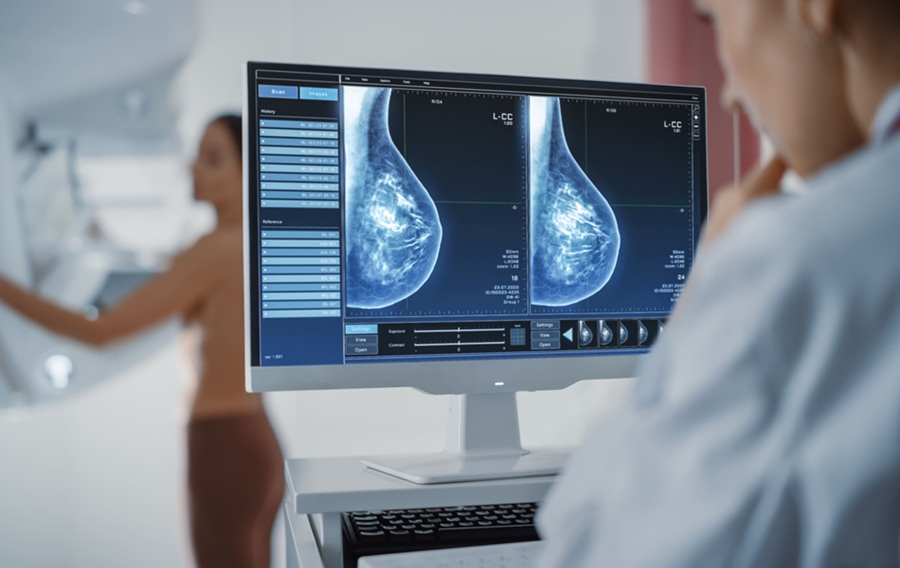
AI Algorithm Uses Mammograms to Accurately Predict Cardiovascular Risk in Women
Cardiovascular disease remains the leading cause of death in women worldwide, responsible for about nine million deaths annually. Despite this burden, symptoms and risk factors are often under-recognized... Read moreMRI
view channel
AI-Assisted Model Enhances MRI Heart Scans
A cardiac MRI can reveal critical information about the heart’s function and any abnormalities, but traditional scans take 30 to 90 minutes and often suffer from poor image quality due to patient movement.... Read more
AI Model Outperforms Doctors at Identifying Patients Most At-Risk of Cardiac Arrest
Hypertrophic cardiomyopathy is one of the most common inherited heart conditions and a leading cause of sudden cardiac death in young individuals and athletes. While many patients live normal lives, some... Read moreNuclear Medicine
view channel
New Imaging Solution Improves Survival for Patients with Recurring Prostate Cancer
Detecting recurrent prostate cancer remains one of the most difficult challenges in oncology, as standard imaging methods such as bone scans and CT scans often fail to accurately locate small or early-stage tumors.... Read more
PET Tracer Enables Same-Day Imaging of Triple-Negative Breast and Urothelial Cancers
Triple-negative breast cancer (TNBC) and urothelial bladder carcinoma (UBC) are aggressive cancers often diagnosed at advanced stages, leaving limited time for effective treatment decisions.... Read more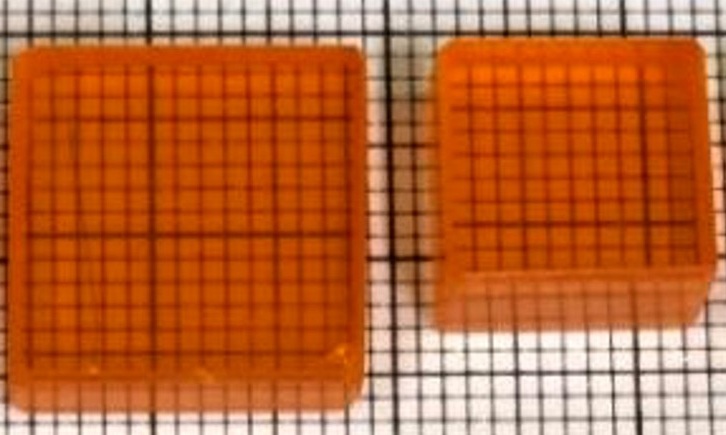
New Camera Sees Inside Human Body for Enhanced Scanning and Diagnosis
Nuclear medicine scans like single-photon emission computed tomography (SPECT) allow doctors to observe heart function, track blood flow, and detect hidden diseases. However, current detectors are either... Read more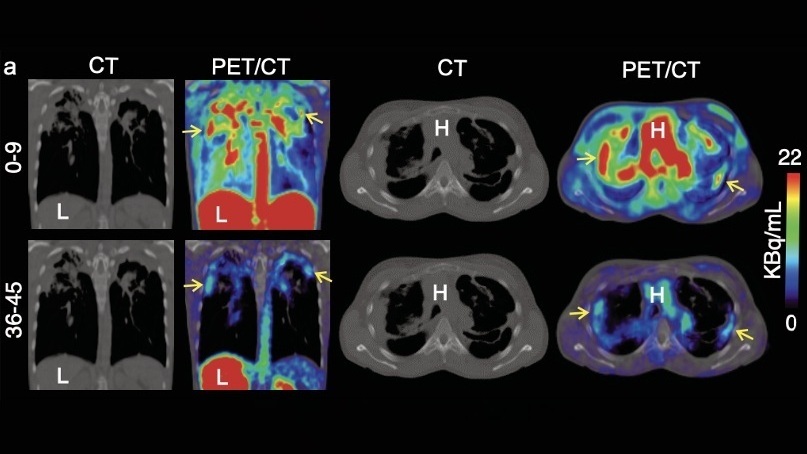
Novel Bacteria-Specific PET Imaging Approach Detects Hard-To-Diagnose Lung Infections
Mycobacteroides abscessus is a rapidly growing mycobacteria that primarily affects immunocompromised patients and those with underlying lung diseases, such as cystic fibrosis or chronic obstructive pulmonary... Read moreGeneral/Advanced Imaging
view channel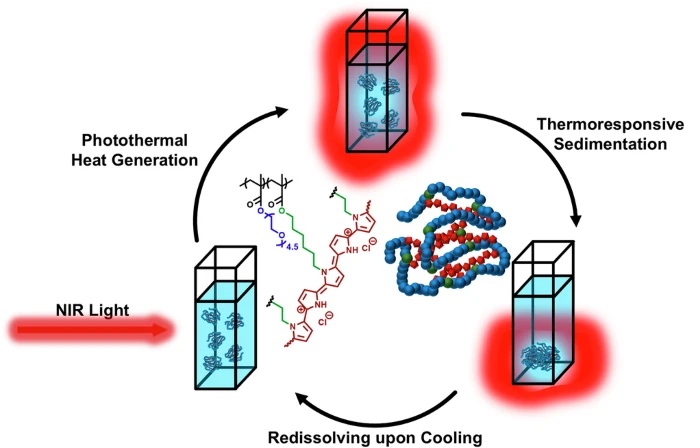
New Ultrasmall, Light-Sensitive Nanoparticles Could Serve as Contrast Agents
Medical imaging technologies face ongoing challenges in capturing accurate, detailed views of internal processes, especially in conditions like cancer, where tracking disease development and treatment... Read more
AI Algorithm Accurately Predicts Pancreatic Cancer Metastasis Using Routine CT Images
In pancreatic cancer, detecting whether the disease has spread to other organs is critical for determining whether surgery is appropriate. If metastasis is present, surgery is not recommended, yet current... Read moreImaging IT
view channel
New Google Cloud Medical Imaging Suite Makes Imaging Healthcare Data More Accessible
Medical imaging is a critical tool used to diagnose patients, and there are billions of medical images scanned globally each year. Imaging data accounts for about 90% of all healthcare data1 and, until... Read more
Global AI in Medical Diagnostics Market to Be Driven by Demand for Image Recognition in Radiology
The global artificial intelligence (AI) in medical diagnostics market is expanding with early disease detection being one of its key applications and image recognition becoming a compelling consumer proposition... Read moreIndustry News
view channel
GE HealthCare and NVIDIA Collaboration to Reimagine Diagnostic Imaging
GE HealthCare (Chicago, IL, USA) has entered into a collaboration with NVIDIA (Santa Clara, CA, USA), expanding the existing relationship between the two companies to focus on pioneering innovation in... Read more
Patient-Specific 3D-Printed Phantoms Transform CT Imaging
New research has highlighted how anatomically precise, patient-specific 3D-printed phantoms are proving to be scalable, cost-effective, and efficient tools in the development of new CT scan algorithms... Read more
Siemens and Sectra Collaborate on Enhancing Radiology Workflows
Siemens Healthineers (Forchheim, Germany) and Sectra (Linköping, Sweden) have entered into a collaboration aimed at enhancing radiologists' diagnostic capabilities and, in turn, improving patient care... Read more












